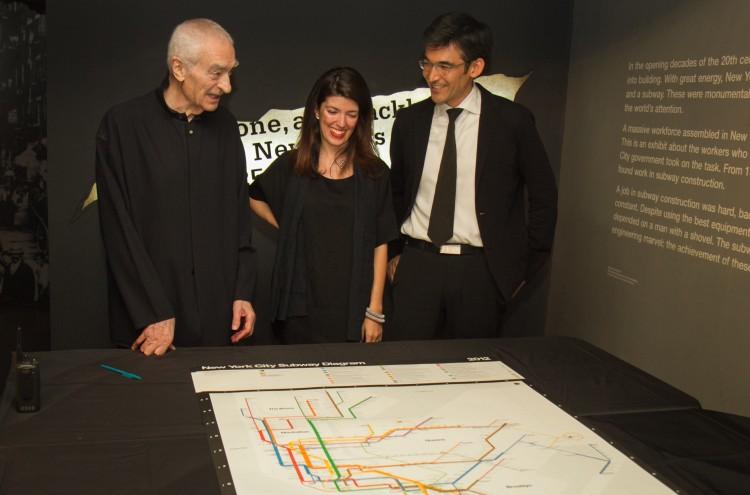NEW YORK—Dressed in all black, Massimo Vignelli, the legendary designer of the 1972 NYC subway map, sat quietly as he listened to his associates introduce the beginnings of his iconic map at a Transit Museum talk on Sept. 12. Then, almost suddenly, he broke out into an impassioned speech that covered all the points of their presentation, while forgetting to show the PowerPoint presentation.
Vignelli, 81, has lost some weight over the years, but he has not lost any of his winsome humor. He called all the complicated maps—before and after his—“a disease of people who don’t know how to design diagrams.” He is a man who dedicated his whole life to simplicity.
Vignelli started the Vignelli Office of Design and Architecture in Milan with his wife Lella Vignelli in 1960. In 1965, they began to work with Unimark International Corporation, doing signage designs for the subway system. Six years later, Vignelli Associates was founded, creating the subway diagram for New York City in 1972.
Before Vignelli, subway maps used to emphasize geographic accuracy between stops, resembling a maze of tangled angles.
The Man Behind the Timeless Subway Map
Dressed in all black, Massimo Vignelli, the legendary designer of the 1972 NYC subway map, sat quietly as he listened to his associates introduce the beginnings of his iconic map at a Transit Museum talk on Sept. 12.

(L) Italian designer Massimo Vignelli stands with Beatriz Cifuentes and Yoshiki Waterhouse, next to the 2012 NYC Subway map that they designed for the iPhone app, the Weekender on Sept. 12 at the MTA museum in Brooklyn. Benjamin Chasteen/The Epoch Times
|Updated:





